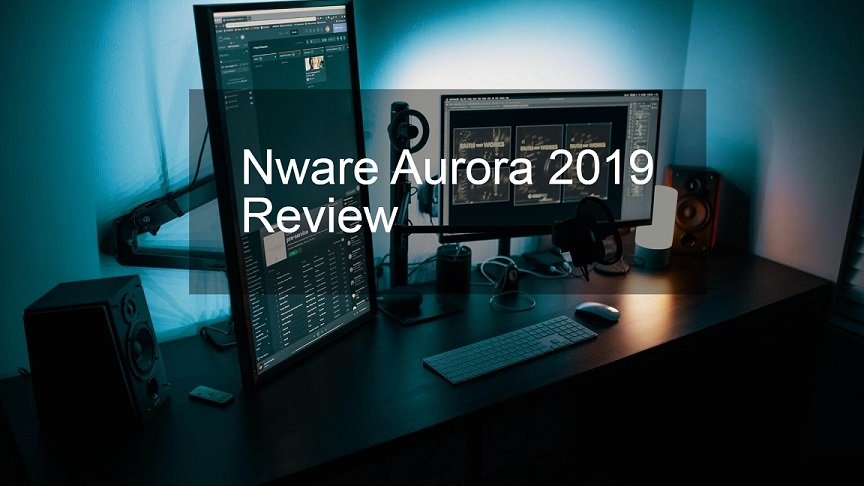
The complete enware aurora 2019 forecast
In this blog post, we will provide a detailed overview of the complete enware aurora 2019 forecast. By following this forecast, you will be able to make better decisions when it comes to technology and its impact on your business. The enware aurora 2019 forecast is a valuable resource that can help you understand the latest trends in technology and their effect on your business. This comprehensive report provides an in-depth look at the current state of technology, as well as predictions for the future. By using this information, you can make informed decisions that will support your success.
As the world moves towards an ever-growing reliance on technology, the demand for enware is only going to continue to grow. This is especially true in the industrial and commercial sectors, where enware can play a critical role in improving efficiency and handling complex tasks. In this blog post, we will provide you with the complete enware aurora 2019 forecast, including a look at each type of enware and what it can do for your business. Stay ahead of the curve and learn about the latest developments in enware so that you can make the most of its benefits for your company.
What is the aurora borealis?
The aurora borealis (also called the northern lights or the great light show) is a natural phenomena that can be seen in the Earth’s atmosphere. It is caused by energetic particles from the Sun interacting with Earth’s magnetic field.
The aurora borealis is a natural light display that can be seen high in the sky during the winter months. The name comes from the Latin word for northern lights, aurora. These stunning displays occur when electrically charged particles called electrons and ions are ejected from the sun’s atmosphere. These charged particles collide with atoms in Earth’s atmosphere and create a colorful light show.
What causes an aurora display?
There are several things that can cause an aurora display. Some of the things that can cause an aurora show to occur are: solar flares, a geomagnetic storm, and a coronal mass ejection. Solar flares are eruptions on the sun’s surface that release energy in the form of rays and particles. Geomagnetic storms happen when strong magnetic fields in the atmosphere interact with solar winds. Coronal mass ejections (CMEs) are huge explosions on the sun’s surface that can send out waves of particles and radiation.
There are many causes for an aurora display, but the most common ones are solar activity and Earth’s magnetic field. Solar activity refers to the number and size of sunspots on the Sun’s surface, while Earth’s magnetic field is caused by the spinning of our planet’s core. When these two things come into contact, they can cause an aurora. The energized particles in the Sun’s atmosphere interact with Earth’s magnetic field and create beautiful displays in the sky.
What to expect during an aurora display
Auroras are one of the most mesmerizing and beautiful sights in nature. Whether near the poles or near the equator, auroras display a wide range of colors and shapes. They usually occur when charged particles from the Sun interact with Earth’s magnetic field.
There’s no one right way to watch an aurora, but you can generally expect the following during a display:
The sky will turn dark, often accompanied by a green or red hue
A curtain of colorful light will typically form in the sky, eventually spreading out across all directions
The light show may last anywhere from just a few minutes to several hours
How to watch the aurora display
There are multiple ways to watch the aurora display, depending on where you are in the world. If you’re outside of the Arctic Circle, you can watch it from anywhere in the world using Google Earth or similar programs. If you’re closer to the poles, you’ll need special equipment and a lucky location to see it. In both cases, it’s worth checking online for updated forecasts and viewing tips.
There are several ways to watch the aurora display. One way is to use an online astronomy service, such as Slooh.com. You can also watch the aurora using a telescope. There are many places around the world where you can see the aurora, including Alaska, Canada, Chile, Norway, and Sweden.
How to photograph the aurora display
There are many ways to photograph the aurora display, depending on your equipment and location. The following tips will help you capture the best aurora photos possible.
1. Use a tripod to avoid camera shake.
2. Dress warmly – the temperature can drop below freezing during an aurora display.
3. Check the weather forecast before heading out – knowing the conditions will help you plan your shooting route.
4. Shoot in RAW format for optimal image quality.
5. Capture multiple exposures to capture all the colors of the aurora borealis.
When to see the aurora borealis
The Northern Lights are a marvel to witness, no matter where you are in the world. Known scientifically as the aurora borealis, these displays can be seen all over the Earth’s atmosphere during certain times of year. The aurora is produced by energy released from the sun that interacts with Earth’s magnetic field.
There are many factors that can affect when and where you will see the aurora borealis. These include location, weather conditions and time of year. For example, the aurora is most commonly seen in high-altitude areas near the poles. It also tends to be more active during colder months, though it can be seen at any time during the year. Keep in mind that seeing the aurora doesn’t guarantee a good viewing experience – conditions must be just right for a truly stunning display.
To get an accurate forecast for when and where you might see the Northern Lights, check out our online Aurora Forecast tool.
How to watch an aurora borealis
If you’re lucky enough to be living in the Northern Hemisphere during the month of February, you can witness one of the most awe-inspiring natural phenomena in all of nature: the aurora borealis. Auroras are essentially colorful curtains of light that can be seen high in Earth’s atmosphere, near the poles. They typically form in regions where charged particles from the sun collide with Earth’s atmosphere.
To see an aurora borealis, all you need is a clear night sky and good weather. If you live anywhere near a big city, chances are it won’t be too difficult to get outside and take in a show – just make sure to go somewhere dark so you don’t damage your eyesight! You may also want to follow along with forecasts for auroras issued by various organizations such as NOAA (National Oceanic and Atmospheric Administration), Space Weather Prediction Center (SWPC), or Sweden Meteorological Institute (SMHI). These organizations are always updating their predictions so make sure to check back often!
What to do if you see the aurora borealis
If you are lucky enough to witness the aurora borealis, be sure to take photos and videos to document the experience! A few tips to keep in mind while viewing the aurora: don’t stare directly at the light, avoid looking at it head-on if possible, and dress warmly since it can get quite cold outside during an aurora event.
If you see the aurora borealis, it is best to take a picture or video and share it with your friends on social media. If you are out in the wilderness, be sure to keep an eye out for dancing lights.
The forecast for the enware aurora
The complete enware aurora forecast starts with the Northern Hemispheric Aurora Prediction System (NHAPS) on September 7, which will release predictions for aurora activity for September 8-12. On September 9, the Canadian Surface Observing System (CSOS) is scheduled to release their predictions for that period as well. The NOAA Space Weather Prediction Center provides an outlook for geomagnetic activity through their G1 Storm Watch and G2 Storm Warning levels, which range from G1 (no significant activity) to G4 (severe storm).
For September 10-12, we have the European Space Agency’s Spacewatch Service providing predictions for both northern and southern hemispheres. The next day, the Japanese Meteorological Agency releases forecasts for the area east of Japan. For September 13-15 NHAPS predicts a low level of auroral activity while CSOS has a high potential for aurora visibility. On September 15 the G1 Storm Watch is discontinued and replaced by a G2 Storm Warning.
What to expect on December 14th
On December 14th, the sun will rise in the eastern sky and set in the western sky. This means that dawn and dusk will occur at approximately the same time each day. Additionally, twilight will last for about two hours longer than usual. It is also expected that around 100-200 meteors per hour could be seen in the evening sky.
On December 14th, the Sun will rise in the east and set in the west. This is opposite to what happens on most days. The sky will be cloudy most of the day with some breaks of sunshine. Temperatures will range from around 29 degrees Celsius to -5 degrees Celsius.
What to expect on January 3rd
On January 3rd, the sun will rise in the east and set in the west. This means that you will be able to see the sunrise and sunset. The sky will be a bright orange or red during sunrise and redder during sunset. Skies will also be cloudy most of the day with some breaks possible. Temperatures today are around -5 degrees Celsius, but they will warm up to -3 degrees Celsius tomorrow morning.
On January 3rd, the sun will reach its solarminimum point. This means that there will be a decreased amount of sun radiation reaching Earth, which in turn will cause the planet to experience colder temperatures. Despite this decrease in temperature, there is still a good chance of seeing auroras on January 3rd.
The best time to see auroras is around midnight-1am, when the atmosphere is most active and the sun’s rays are weakest. If you’re lucky enough to see an aurora during these hours, it will likely be faint and sporadic. However, if you can stay up late and watch the sky until sunrise, you’re more likely to see a brighter display.
What to expect on January 10th
On January 10th, the sky will be ablaze with the colors of the aurora borealis. This brilliant light show can be seen all around the world, but it’s especially dazzling in places like Scandinavia and Alaska.
The aurora is caused by energetic particles from the sun that collide with Earth’s atmosphere. These collisions create a variety of colorful light displays in the night sky, including reds, oranges, and yellows.
There is no one way to predict what kind of display you’ll see on January 10th, but most likely you’ll see some beautiful displays in the northern hemisphere. If you want to witness this incredible natural phenomena for yourself, make sure to check out a spot with good visibility early in the evening.
The complete enware aurora 2019 forecast
This blog post covers the complete enware aurora forecast for 2019. For reference, here are the dates and times for each activity:
March 1: First detectable aurora at 11 p.m. MDT
March 2: Aurora activity increases in northern hemisphere
3-10: Increased aurora activity observed in Antarctica, Europe, Asia and North America
11-16: Activity decreases in northern hemisphere
Enware Aurora Forecast: What to Watch For
Looking to stay ahead of the next Aurora Borealis? Here’s a complete enware aurora forecast for your viewing pleasure.
Thursday, January 18: A weak aurora may be visible as early as 5 p.m. from some locations across northern Canada and Greenland. The chances of a better show increase in the evening hours, and by midnight or 1 a.m., most observers should have good prospects for seeing some activity. However, don’t count on it; even strong auroras can be disappointing if seen from far away.
Friday, January 19: The sky will continue to be active all night long with occasional bursts of light giving way to mostly dark skies by morning. By 2 or 3 a.m., you’re likely to see an impressive display if you’re located near the poles. Unfortunately, viewers farther south won’t see anything at all today due to the Earth’s curvature.
Saturday, January 20: Saturday is shaping up to be another good day for aurora watchers with plenty of opportunities for action in both the morning and evening hours. Although things may not be as intense as they were on Friday night, there’s still a good chance to catch something beautiful if you’re out and about during daylight hours. However, conditions will become more difficult as darkness falls, so make sure you have adequate lighting available before heading outside!
The Weather Conditions That Will Affect Aurora viewing
The complete enware aurora forecast for the week of May 14-20 includes a range of meteorological conditions that could affect viewing. The key weather variables to watch for this week include low pressure over Western Canada pushing cold air masses in from the Arctic, strong afternoon sun, and unsettled airmass conditions.
Aurora watchers in the Lower 48 states should keep an eye on monitored forecasts issued by NOAA’s Space Weather Prediction Center as those can change quickly with changes in jet stream direction and speed. Predicted auroral activity will also vary based on location since different parts of Earth are more susceptible to auroras due to its magnetic field.
In the meantime, here is a look at how Aurora activity is expected status quo across North America:
How to Get the Most Out of Your Viewing Experience
1. How to get the most out of your viewing experience
If you’re looking for a truly mesmerizing celestial show, don’t miss the enware aurora forecast. This amazing website provides live updates on the latest aurora sightings across North America and Europe, so you can watch the dancing lights in all their glory from wherever you are. Just enter your location and it will provide you with the best time to look, plus detailed forecasts for the next several days. You won’t be disappointed!
What to Expect During the Enware Aurora Show
The Enware Aurora Show is one of the most important tech events in Europe and it will take place in Barcelona between October 30th and November 2nd. This year, the conference will be focused on Artificial Intelligence (AI), 5G, and blockchain technology. In addition to expert presentations from leading industry experts, there will be a number of fireside chats with CEOs and other senior executives from some of the world’s biggest companies.
Topics covered at this year’s show include:
– Building intelligent customer experiences with AI
– Deploying AI for improved supply chain management
– The future of blockchain technology
Conclusion
The complete enware aurora 2019 forecast has been published, and we can expect an incredible show! The enware aurora is one of the most beautiful natural phenomena in the world, and this year’s forecast predicts that it will be even more spectacular than ever. If you’re lucky enough to be living in a place where you can see the enware aurora, don’t miss out on this incredible experience — get your tickets now!

